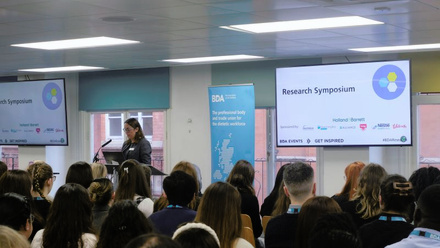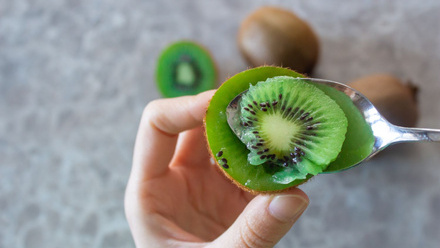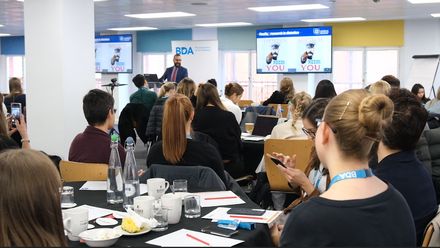As we say goodbye and thank you to the outgoing Editor in Chief of the Journal of Human Nutrition and Dietetics (JHND), Professor Simon Langley-Evans, we welcome a new one in Professor Lauren Ball.
Simon, who was appointed editor of JHND in 2012, is Professor of Human Nutrition at the University of Nottingham where he is known to the many dietitians who trained there.
Simon instigated many changes to the Journal during his 11 year tenure. He embraced the world of Twitter (now X) and wrote a regular editor’s blog highlighting papers with his “Editor’s pick” as well as offering would-be authors useful advice on the writing process with his series “How to write”, which has now become an e-book.

In 2013, the impact factor for the Journal rose above 2. Impact factors offer a way of measuring the success of a journal by measuring how often the average paper has been cited by other authors over a period of time. The most downloaded paper was the British Dietetic Association evidence-based guidelines for the dietary management of irritable bowel syndrome in adults, written by a group of dietitians from the BDA Gastroenterology Specialist Group. Papers from the specialist group have continued to be amongst the most popular published by the Journal.
In a blog on rejection, Simon wrote: “The key thing is to remember that it is not a personal decision. When we reject a manuscript, although it feels like it, we are not making a personal slur against you. Our sole aim is to raise JHND up to internationally high standing and do the best we can to showcase excellent, citable research that has reach rigour and significance for the field of human nutrition and dietetics.”
In 2014, JHND saw the introduction of three virtual issues in collaboration with other journals, and also the introduction of the JHND app. Virtual issues are a themed collection of previously published papers which are made available, with an editorial discussing the links between the papers, free of charge. They represent a way of viewing papers previously published in other journals. There was also a change in referencing style with a move from the Harvard style to the Vancouver style which is currently used.
Another paper written by dietitians from the BDA Gastroenterology Specialist Group, the British Dietetic Association evidence-based guidelines for the dietary management of Crohn’s disease in adults, was third in the top five most downloaded papers of 2014.
January 2015 saw the publication of Nutrition in early life and the programming of adult disease: a review, which went on to receive enough citations to place it in the top 1% of its academic field. Also in 2015, Simon ended a blog on authors recommending reviewers by stating: “The selection of appropriate reviewers for a paper is best aided by authors providing a clear and well-worded title and abstract and appropriate keywords to allow the editor to search databases effectively. If those keyword fields in the submission system are completed accurately then there is a strong chance that strong reviewers will be chosen without having to dive into the complex psychology of author-editor relationships.” Sound advice that still stands.
By 2016, @JHNDEditor had over 1,000 followers on Twitter. As Simon pointed out in his blog, if just 10 of those followers retweeted a link to a paper, that paper would have reached the notice of over 10,000 people. Top ten papers from 2016 included British Dietetic Association systematic review and evidence-based practice guidelines for the dietary management of irritable bowel syndrome in adults (2016 update) from Yvonne McKenzie and colleagues on behalf of, once again, the BDA Gastrointestinal Specialist Group and Dr Angela Madden’s and Dr Sara Smith’s paper on body composition.
January 2016 also saw the introduction of a requirement for authors to declare that their research reporting was transparent – in other words, a statement that work is consistent with principles of CONSORT, STROBE or PRISMA, depending on the type of research that is being described. Simon wrote: “This is a strategy that we adopted in order to improve quality in the research that we publish and to commit our authors to high standards of integrity in their work.”
In 2017, JHND was ranked 42nd out of 81, with an impact factor of 2.68. The most cited papers included a FODMAPs paper first published in 2011 by Dr Miranda Lomer and the team at King’s College in London and Dr Carrie Ruxton’s review paper on omega-3 fatty acids from 2004. This year also saw the publication of a virtual issue in collaboration with the Journal of Renal Care. The Journal was now only published online and included around 80 papers a year, with an acceptance rate of around 15% of all papers received.
In 2018, the Journal supplement publishing the abstracts from the BDA Research Symposium included over 60 abstracts from five streams.
In 2019 the impact factor rose above 3 and JHND was place 39th out of 86 nutrition and dietetic journals.
In 2020 the Journal web pages were updated to list the most cited and the most accessed papers in 2019, and 2020 also saw the introduction of graphical abstracts, a pictorial representation of the main findings of the paper. These are of particular value when used to disseminate scientific findings through social media.
📣 BREAKING NEWS: We have a new Editor-in-Chief, @ProfLaurenBall, who will commence her role from Jan 2024. Here’s what we have in store with Lauren’s leadership: pic.twitter.com/eGKPCjI9uV
— Journal of Human Nutrition and Dietetics (@JHND_Official) November 27, 2023
In 2022 JHND started to offer the authors of accepted papers the opportunity to record a short audio or video presentation to accompany their paper and now, at the end of 2023, we welcome Professor Lauren Ball from the University of Queensland, Australia, as the new Editor in Chief of JHND. Lauren has a clinical background as an Advanced Accredited Practising Dietitian and Exercise Physiologist and has been an associate editor of JNHD along with UK dietitians Sorrell Burden and Duanne Mellor. Lauren has an early view paper online in JHND in September, Exploring Australian dietitians' experiences and preparedness for working in residential aged care facilities. You can find Lauren on Twitter and Linkedin.







